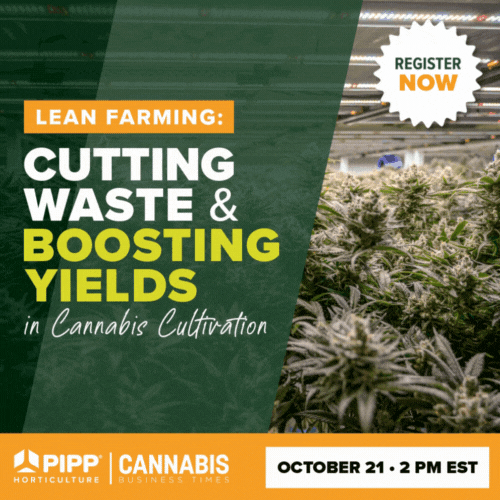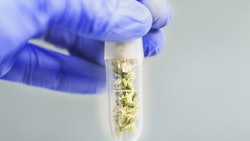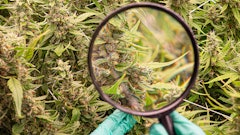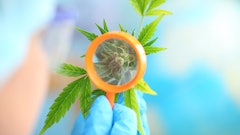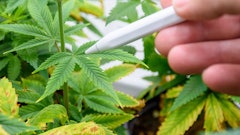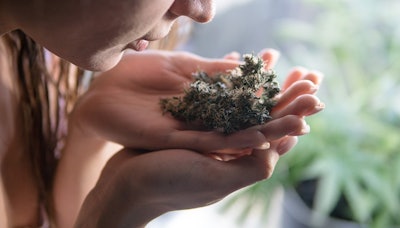
The debate amongst cannabis enthusiasts is ongoing: What determines ‘quality’ cannabis? Is it THC percentage? Is it the terpenes? Or is it something else?
The answer is right in front of your face: Your nose. Smell and/or aroma are the defining characteristics of ‘quality’ cannabis, according to newly published research.
The report, “The Nose Knows: Aroma, but Not THC, Mediates The Subjective Effects of Smoked and Vaporized Cannabis Flower,” was published this month in the journal Psychoactives and authored by Dr. Ethan Russo, Jeremy Plumb, Shaban Demirel, Jeremy Sackett, and Adrianne Wilson-Poe.
The report sought to define what “quality” cannabis means, noting that “studies have shown that cannabis consumers are willing to pay more money for higher-quality products … THC potency has been adopted as the primary marketing-driving feature of cannabis products.”
The research studied 276 volunteers, who each randomly received a sample kit containing eight to 10 random samples of cannabis flower, weighing about 1 gram each, in sealed glass jars. Volunteers were given 30-plus days to consume the samples, and were encouraged to abstain from cannabis use for 48 hours prior to consumption in order to normalize baseline sensitivity to cannabis’ subjective effects.
The research measured subjective appeal via two domains: raw enjoyment and mood, ranking both on scales from one to seven, equating to a total of 14 possible points.
As the report title reads, data showed aroma or smell – not THC percentage – was the differentiating factor when determining “quality” of cannabis flower.
“The strongest contribution to subject appeal that we observed was pleasant subjective aroma. That is, cannabis flowers with the most appealing aromas were the most likely to have the greatest subjective appeal,” the report reads.
“Pleasant subject aroma (but not terpene expression, THC potency, or THC dose) was positively correlated with pleasant subjective effects,” the report reads. “… These results suggest that, unlike THC potency, pleasant aroma is predictive of pleasant subjective effects. Similar to other agricultural commodities such as coffee and tea, aroma appears to be a robust indicator of the quality of cannabis inflorescence.”
However, the report also analyzed the relationship between terpene expression and subjective appeal, noting that although “terpenes and terpenoids are known to contribute to the aroma of cannabis,”
the data found “no association between total terpene expression and experiential appeal.”
The report also found THC potency, while not correlated with subjective appeal, was more preferred by male study participants.
“In line with previous reports, we found that THC potency was not correlated with subjective appeal,” the report reads. “However, we found a small but statistically significant interaction between biological sex and THC potency, with males reporting slightly more enjoyment of high-THC samples.”
The data also found that dose amount does not correlate to subjective appeal of cannabis flower.
“Contrary to widely held public opinions, the dose of THC consumed in a single session was not correlated with subjective appeal.” The most commonly reported amount of cannabis consumed by research participants in a single session was 0.25 grams, accounting for nearly 45% of all sessions.
RELATED: Demystify Terpenes With Cannabis Fragrance & Flavor Groups
Furthermore, the research assessed whether THC potency correlated with unwanted subjective effects, including dry eyes, dry mouth, or trouble sleeping. The data found “no relationship” between THC potency and these effects, but did find THC potency impacts the heart.
“There was a small relationship between THC potency and tachycardia, with high-THC inflorescence more likely to product racing hearts,” the report reads.
Read the full report here.

